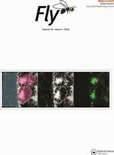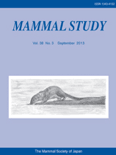
BEHAVIOR GENETICS
Scope & Guideline
Transforming Understanding of Behavior Through Genetics
Introduction
Aims and Scopes
- Genetic and Environmental Influences:
Research often investigates how genetic factors contribute to behavioral traits, alongside the influence of environmental factors, including family dynamics and socio-economic conditions. - Twin and Family Studies:
Utilizing twin and family designs allows researchers to disentangle the relative contributions of genetic and environmental influences on various behaviors and psychological traits. - Polygenic Risk Scores (PRS):
The journal emphasizes studies utilizing polygenic risk scores to explore associations between genetic predispositions and behavioral outcomes, enhancing the predictive understanding of complex traits. - Developmental Perspectives:
There is a consistent focus on developmental trajectories, examining how genetic and environmental factors interact across different life stages, particularly in adolescence and early adulthood. - Interdisciplinary Approaches:
Behavior Genetics incorporates interdisciplinary methodologies, integrating insights from psychology, neuroscience, and genomics to address complex behavioral questions.
Trending and Emerging
- Gene-Environment Interactions:
An increasing number of studies are exploring how genetic predispositions are influenced by environmental factors, reflecting a growing interest in understanding the complexity of behavior in real-world contexts. - Longitudinal and Developmental Studies:
There is a trend towards longitudinal research that tracks behavioral and genetic changes over time, providing deeper insights into the developmental aspects of behavior and its genetic underpinnings. - Diversity and Inclusion in Research:
Emerging themes emphasize the importance of diversity in genetic research, focusing on underrepresented populations and the implications of genetic findings across different demographic groups. - Machine Learning and Advanced Statistical Methods:
The use of advanced statistical techniques and machine learning approaches is on the rise, allowing researchers to analyze large datasets and uncover complex relationships between genetic and behavioral traits. - Mental Health and Psychopathology:
There is a significant increase in research addressing the genetic and environmental contributions to various mental health issues, reflecting the growing awareness of the importance of mental health within the field.
Declining or Waning
- Single-Factor Trait Analyses:
Research focused solely on single genetic factors or traits has declined, as the field increasingly favors multi-faceted and integrative approaches that consider the interplay of multiple genes and environmental factors. - Static Genetic Models:
Traditional static models that do not account for dynamic interactions between genes and environments are becoming less common, as researchers recognize the need for more complex modeling of behavioral genetics. - Overemphasis on Heritability Estimates:
There seems to be a waning focus on solely estimating heritability without considering the broader context of gene-environment interactions, reflecting a shift towards more holistic approaches.
Similar Journals

Cytology and Genetics
Unraveling the Complexities of Life at the Cellular LevelCytology and Genetics is an esteemed academic journal published by PLEIADES PUBLISHING INC, dedicated to advancing research within the fields of cytology, cellular biology, and genetics. Since its inception in 1978, the journal has served as a platform for disseminating innovative findings and methodologies pertinent to contemporary biological sciences. With an ISSN of 0095-4527 and an E-ISSN of 1934-9440, Cytology and Genetics offers critical insights that significantly contribute to the current understanding of genetic mechanisms and cellular processes. Despite its present positioning in the Q4 quartile across multiple categories, including Agricultural and Biological Sciences and Cell Biology, the journal remains a crucial resource for emerging researchers seeking to explore complex genetic and cytogenetic landscapes. With an emphasis on empirical studies and comprehensive reviews, the journal aims to bridge gaps in knowledge and foster collaboration among scholars in the United States and beyond. As a vital tool for students, professionals, and researchers, Cytology and Genetics invites contributions that reflect the future of genetics and cytological science.

RUSSIAN JOURNAL OF GENETICS
Shaping the Future of Genetic UnderstandingRUSSIAN JOURNAL OF GENETICS is a significant platform in the field of genetics, published by PLEIADES PUBLISHING INC since its inception in 1996. With an ISSN of 1022-7954 and an E-ISSN of 1608-3369, the journal focuses on a wide array of topics within genetics, providing researchers, professionals, and students with insights into advancements and discoveries in this ever-evolving discipline. While it currently holds a Q4 ranking in the 2023 Genetics category according to Scopus, representing invaluable opportunities for knowledge dissemination, the journal is actively working to enhance its impact in future rankings. Readers will find the journal a repository of diverse genetic research findings, methodologies, and theoretical advancements. Although it is not an open-access journal, it is committed to serving the academic community through rigorous peer-reviewed articles. With a consistent publication trajectory spanning to 2024, the RUSSIAN JOURNAL OF GENETICS remains a crucial resource for those aspiring to stay at the forefront of genetic research and applications.

GENES BRAIN AND BEHAVIOR
Exploring the Nexus of Genes, Brain, and BehaviorGENES BRAIN AND BEHAVIOR is a leading journal published by Wiley that focuses on the intricate interplay between genetic factors and behavioral neuroscience. With a robust ISSN of 1601-1848 and an E-ISSN of 1601-183X, this journal serves as a premier platform for innovative research that spans across multiple fields including genetics, neurology, and behavioral neuroscience. Recognized for its significant impact with a 2023 categorization of Q1 in Behavioral Neuroscience and Q2 in both Genetics and Neurology, GENES BRAIN AND BEHAVIOR asserts itself as an influential resource for scholars, practitioners, and students alike, facilitating the advancement of knowledge in these dynamic areas. Its Scopus rankings underscore its prominence—ranking #18 in Behavioral Neuroscience and #45 in Neurology, placing it in the top percentiles among its peers. Although not an open-access journal, the rigorous peer-review process ensures high-quality publications, pivotal for those pursuing cutting-edge research and applications. With a history of convergence from 2002 to 2024, this journal continues to foster academic dialogue and discovery in the ever-evolving landscape of brain and behavioral studies.

FLY
Fostering Collaboration in Insect ResearchFLY, an esteemed journal published by Taylor & Francis Inc, is a leading resource in the field of Insect Science, offering cutting-edge research and insights into the biology, ecology, and management of flies and related insect species. With an impressive Impact Factor reflecting its high citation and publication standards, FLY serves as a vital platform for researchers and practitioners aiming to advance their understanding of this diverse and crucial group of organisms. The journal, which has been publishing since 2007 and is set to continue until 2024, is recognized as a Q1 category journal in its discipline, ranked 58 out of 181 in Agricultural and Biological Sciences, placing it in the 68th percentile of the field. Although currently non-open access, the journal is committed to disseminating valuable knowledge and fostering collaboration among scientists, offering unparalleled opportunities for professionals, researchers, and students to engage with transformative science in the insect realm.

MAMMAL STUDY
Illuminating the path to understanding mammalian diversity.Mammal Study, published by the Mammalogical Society of Japan, is a leading academic journal dedicated to the field of mammalogy and related biological sciences. Since its inception, it has provided a critical platform for researchers, professionals, and students to share their findings and insights into the diverse facets of mammalian biology, ecology, and conservation. The journal, with ISSN 1343-4152 and E-ISSN 1348-6160, is recognized for its rigorous peer-review process and has attained a commendable Q3 ranking in the 2023 category of Animal Science and Zoology. With an impact factor reflecting its growing influence—ranking 283 out of 490 in Scopus—we welcome contributions that advance the understanding of mammalian species and their habitats. While access to published articles is through traditional channels, the journal aims to reach an even wider audience by fostering greater awareness and appreciation for mammalian research and conservation efforts. The Mammal Study has converged years of insightful publications from 2008 to 2024, solidifying its position as a vital resource in the biological sciences.

NATURE GENETICS
Elevating Genetic Science to New HeightsNature Genetics is a premier journal in the field of genetics published by NATURE PORTFOLIO, renowned for its impactful research and significant contributions to the understanding of genetic mechanisms and their implications for human health. Since its establishment in 1992, the journal has continually maintained a strong reputation, evidenced by its impressive Q1 ranking in the Genetics category and a commendable Scopus ranking of #4 out of 347 in Genetics, placing it in the 98th percentile. Although it does not currently offer Open Access options, Nature Genetics remains a critical resource for researchers and practitioners, providing cutting-edge studies and papers that drive advancements in both fundamental and applied genetic research. With a global readership and contributions from leading scientists around the world, this journal is a vital platform for disseminating innovative findings and fostering discussions at the frontier of genetics.

PLoS Genetics
Empowering researchers through open access to genetic innovation.PLoS Genetics, published by the PUBLIC LIBRARY SCIENCE, is a leading open-access journal dedicated to advancing the field of genetics, molecular biology, and related disciplines. With its ISSN of 1553-7404, this esteemed journal has been offering unrestricted access to its content since 2005, fostering a global community of researchers, professionals, and students. Situated in the United States, its contributions can be found at 1160 Battery Street, Ste 100, San Francisco, CA 94111. As of 2023, PLoS Genetics proudly holds a Q1 ranking in multiple categories including Cancer Research, Ecology, Evolution, Behavior and Systematics, Genetics, and Molecular Biology, underscoring its impact in these vital scientific areas. The journal's commitment to disseminating high-quality research is reflected in its impressive Scopus rankings, with notable positions in various fields of study, ensuring that it remains a crucial resource for cutting-edge research and innovation. By providing an open-access platform, PLoS Genetics not only enhances the visibility of genetic research but also encourages collaborations and the sharing of knowledge that can lead to significant breakthroughs in science.

Evolutionary Biology
Connecting Research and Ideas in Evolutionary BiologyEvolutionary Biology is a distinguished academic journal published by Springer, focusing on the intricate fields of ecology, evolution, behavior, and systematics. This journal, with the ISSN 0071-3260 and E-ISSN 1934-2845, has established itself as a critical platform for cutting-edge research and innovative ideas that shape our understanding of biological evolution and its implications. Operating from Germany, it ranks in the Q2 quartile in its category for 2023, placing it in the top tier of journals recognized for quality and impact, with a Scopus rank in the 66th percentile among its peers. Despite not being Open Access, this journal ensures comprehensive dissemination of knowledge essential for researchers, professionals, and students passionate about evolutionary studies. With a publication history tracing back to 1993 and converging years up to 2024, Evolutionary Biology continues to significantly impact the academic landscape, fostering dialogue and collaboration across various disciplines within the biological sciences.

AMERICAN JOURNAL OF MEDICAL GENETICS PART B-NEUROPSYCHIATRIC GENETICS
Bridging Genetics and Psychiatry for a Healthier TomorrowAmerican Journal of Medical Genetics Part B: Neuropsychiatric Genetics, published by Wiley, stands at the forefront of research dedicated to the intricate relationship between genetics and neuropsychiatric disorders. With an impressive scope that bridges various disciplines, this journal serves as a premier platform for groundbreaking studies and innovative perspectives in the fields of Cellular and Molecular Neuroscience, Genetics, and Psychiatry and Mental Health. Featuring a robust impact factor and categorized in the Q1 and Q2 quartiles across multiple relevant categories, the journal has successfully positioned itself as a leading source of high-quality research, ranking 52nd in Cellular and Molecular Neuroscience, 37th in Clinical Genetics, and 157th in Psychiatry and Mental Health within Scopus. Since its inception in 1995, it has sustained a commitment to fostering scholarly excellence and advancing our understanding of the genetic underpinnings of mental health. The journal is poised to continue its mission until 2024 and offers open access options, facilitating wider dissemination of vital knowledge among researchers, healthcare professionals, and students alike.

HEREDITY
Elevating Genetic Research: A Journey Through Time and DiscoveryHEREDITY is a prestigious academic journal published by SpringerNature, specializing in the dynamic fields of Genetics and Genetics (Clinical). With a history of excellence since its inception in 1947, this journal has established itself as a significant contributor to the understanding of genetic research, addressing both foundational principles and clinical applications. Operating without an open access model, it maintains a strong reputation with an impact factor that reflects its rigorous peer-review process and high-quality submissions, ranking in the top quartiles of its category as evidenced by its Q2 classification in Genetics and Genetics (clinical) for 2023. Further, HEREDITY holds commendable positions in Scopus rankings, illustrating its influence within the field, currently placed #21 out of 99 in Medicine (Clinical Genetics) and #87 out of 347 in Biochemistry, Genetics, and Molecular Biology (Genetics). Researchers, professionals, and students are invited to explore the latest discoveries and advancements in genetics through this esteemed journal, contributing to the broader discourse and innovation within the field.